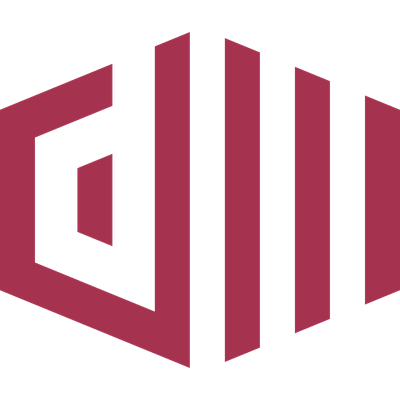What does Carón mean?
Definitions for Carón
carón
This dictionary definitions page includes all the possible meanings, example usage and translations of the word Carón.
Did you actually mean carom or carina?
Wiktionary
caronnoun
háek
Etymology: Etymology ; first known use is the United States Government Printing Office Style Manual of 1967, where it apparently referred to an inverted caret. Possibly derived from caret after its similar shape (^), and with -on either from macron or as an augmentative after reanalysis of -et as a diminutive.
Wikipedia
Caron
A caron (), háček or haček (, or ; plural háčeks or háčky) also known as a hachek, wedge, check, kvačica, strešica, mäkčeň, varnelė, inverted circumflex, inverted hat, flying bird, inverted chevron, is a diacritic mark (◌̌) commonly placed over certain letters in the orthography of some languages to indicate a change of the related letter's pronunciation. The symbol is common in the Baltic, Slavic, Finnic, Samic and Berber languages. The use of the caron differs according to the orthographic rules of a language. In most Slavic and other European languages it indicates present or historical palatalization (e → ě; [e] → [ʲe]), iotation, or postalveolar articulation (c → č; [ts] → [tʃ]). In Salishan languages, it often represents a uvular consonant (x → x̌; [x] → [χ]). When placed over vowel symbols, the caron can indicate a contour tone, for instance the falling and then rising tone in the Pinyin romanization of Mandarin Chinese. It is also used to decorate symbols in mathematics, where it is often pronounced ("check"). The caron is shaped approximately like a small letter "v". For serif typefaces, the caron generally has one of two forms: either symmetrical, essentially identical to a rotated circumflex; or with the left stroke thicker than the right, like the usual serif form of the letter "v" (but without serifs). The latter form is often preferred by Czech designers for use in Czech, while for other uses the symmetrical form tends to predominate, as it does also among sans-serif fonts. The caron is not to be confused with the breve (◌̆), which has a curved bottom, while the caron is pointed (see illustration).
Wikidata
Caron
A caron or háček, also known as a wedge, inverted circumflex, inverted hat, is a diacritic placed over certain letters to indicate present or historical palatalization, iotation, or postalveolar pronunciation in the orthography of some Baltic, Slavic, Finno-Lappic, and other languages. The caron also indicates the third tone in the Pinyin romanization of Mandarin Chinese. It looks similar to a breve, but has a sharp tip, like an inverted circumflex, while a breve is rounded. Compare the caron: Ǎ ǎ Ě ě Ǐ ǐ Ǒ ǒ Ǔ ǔ to the breve: Ă ă Ĕ ĕ Ĭ ĭ Ŏ ŏ Ŭ ŭ. The left stroke is usually thicker than the right stroke in serif typefaces. The caron is also used as a symbol or modifier in mathematics.
Surnames Frequency by Census Records
CARON
According to the U.S. Census Bureau, Caron is ranked #2817 in terms of the most common surnames in America.
The Caron surname appeared 12,810 times in the 2010 census and if you were to sample 100,000 people in the United States, approximately 4 would have the surname Caron.
94.3% or 12,086 total occurrences were White.
2.7% or 352 total occurrences were of Hispanic origin.
1.2% or 154 total occurrences were of two or more races.
0.7% or 96 total occurrences were Asian.
0.5% or 76 total occurrences were Black.
0.3% or 47 total occurrences were American Indian or Alaskan Native.
Anagrams for Carón »
narco
racon
acorn
Coran
Numerology
Chaldean Numerology
The numerical value of Carón in Chaldean Numerology is: 2
Pythagorean Numerology
The numerical value of Carón in Pythagorean Numerology is: 9
Popularity rank by frequency of use
Translations for Carón
From our Multilingual Translation Dictionary
Get even more translations for Carón »
Translation
Find a translation for the Carón definition in other languages:
Select another language:
- - Select -
- 简体中文 (Chinese - Simplified)
- 繁體中文 (Chinese - Traditional)
- Español (Spanish)
- Esperanto (Esperanto)
- 日本語 (Japanese)
- Português (Portuguese)
- Deutsch (German)
- العربية (Arabic)
- Français (French)
- Русский (Russian)
- ಕನ್ನಡ (Kannada)
- 한국어 (Korean)
- עברית (Hebrew)
- Gaeilge (Irish)
- Українська (Ukrainian)
- اردو (Urdu)
- Magyar (Hungarian)
- मानक हिन्दी (Hindi)
- Indonesia (Indonesian)
- Italiano (Italian)
- தமிழ் (Tamil)
- Türkçe (Turkish)
- తెలుగు (Telugu)
- ภาษาไทย (Thai)
- Tiếng Việt (Vietnamese)
- Čeština (Czech)
- Polski (Polish)
- Bahasa Indonesia (Indonesian)
- Românește (Romanian)
- Nederlands (Dutch)
- Ελληνικά (Greek)
- Latinum (Latin)
- Svenska (Swedish)
- Dansk (Danish)
- Suomi (Finnish)
- فارسی (Persian)
- ייִדיש (Yiddish)
- հայերեն (Armenian)
- Norsk (Norwegian)
- English (English)
Word of the Day
Would you like us to send you a FREE new word definition delivered to your inbox daily?
Citation
Use the citation below to add this definition to your bibliography:
Style:MLAChicagoAPA
"Carón." Definitions.net. STANDS4 LLC, 2025. Web. 11 Feb. 2025. <https://www.definitions.net/definition/Car%C3%B3n>.






Discuss these Carón definitions with the community:
Report Comment
We're doing our best to make sure our content is useful, accurate and safe.
If by any chance you spot an inappropriate comment while navigating through our website please use this form to let us know, and we'll take care of it shortly.
Attachment
You need to be logged in to favorite.
Log In